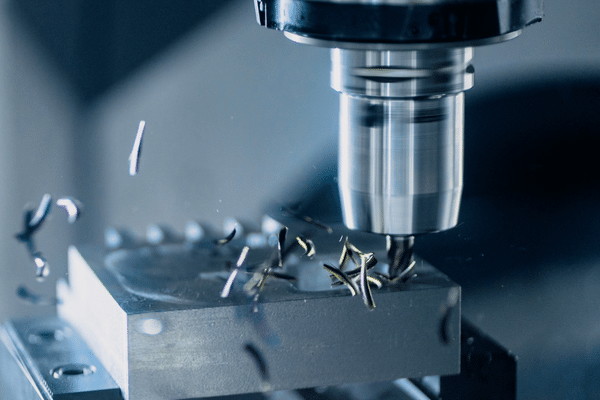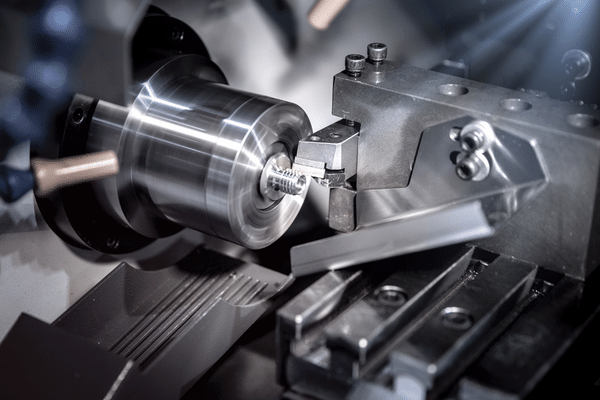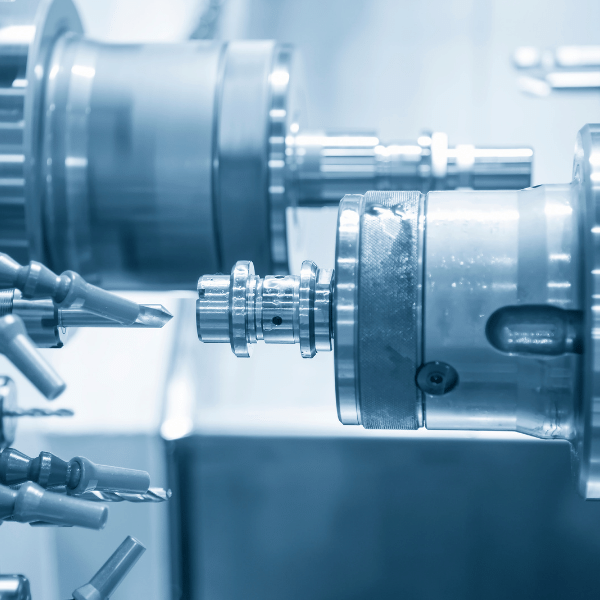Turning a small diameter hole inside a thin-walled part is best done with a spiral toolpath rather than a conventional straight axis toolpath. Spiral toolpaths use tighter paths to perform the cutting, causing less stress and chatter on the tool and allowing higher feed rates, resulting in a better finish. Additionally, the chip can be “caught” by the cutter’s rake face more effectively, meaning clogging is less likely. The result of all this is an improved surface finish and less tool wear.
Reasons for the thin-walled parts being deformed:
Force
The first reason is the force applied to the part. If you have a small part weighing less than a pound, it may not be strong enough to withstand the force required to bend it. The second reason is that there are no supports for the thin walls of the part. This can happen when there is not enough material or if there are no ribs or bosses to support the walls of the part. The third reason is that there is too much material in one area of your part. This makes it weak in those areas and causes it to deform if too much force is applied.
Heat
Heat is the reason for most of the deformation in thin-walled parts. It can be generated by welding, machining, heating, or cooling. When heat is applied to a metal surface, it flows out of the material by conduction and radiation. This causes the surface of a part to become hotter than its interior.
If there are no thermal barriers between the hot surface and the cooler base metal, heat will continue to flow out of the part until they reach an equilibrium temperature. At that point, no more heat flows out through conduction or radiation. If this temperature 0exceeds room temperature, deformation should occur as the part cools.
Vibration
Vibration is a common cause of thin-walled parts being deformed. When vibration is present, the plastic material of the part will move back and forth at a high frequency. As the material moves back and forth, it can become stretched out of shape. This can happen in various ways depending on how the part is vibrated. For example, if an object is vibrated in one dimension (such as along its length), then only one side will be compressed while the other side will be stretched out. If an object is vibrated in two dimensions (up and down), then all sides will be compressed by equal amounts so that there is no net stretching or compressing of any part of the object. The result is that objects that are vibrated often have curved surfaces that follow their original contours but are offset from their original position by some distance in each direction due to this movement.
Reasonable selections of clamping methods
For the thin-walled parts, the selection of clamping methods is very important.
For example, for a thin-walled part that needs to be clamped with a jig, it is necessary to choose a clamping method that is suitable for the jig. The most common methods are:
1. For a thin-walled part that needs to be clamped with a soft jig, it is best to choose a soft clamping method such as spring clamping and rubber band clamping.
2. For a thin-walled part that needs to be clamped with a hard jig, it is best to choose a hard clamping method such as bolts and nuts or threaded rods and nuts.
Selections of cutting parameters
– Cut depth: The depth of cut, the amount a tool removes from the workpiece, affects how much force is required to move the tool through the material. If the cut depth is too shallow, it can cause the tool to jam or break; if it’s too deep, it can cause tool deflection, which changes the geometry of the machined part.
– Feed rate: The feed rate is how fast the cutting tool moves into and out of the workpiece as it cuts through the material. Increasing feed rate will increase productivity and lead to tool breakage and poor surface finish on parts. Decreasing feed rate will reduce productivity and increase cycle times but leads to better surface finish than increasing feed rate.
– Tool speed: The rotational speed of the spindle motor determines how fast the cutting tool rotates while in contact with material during machining operations such as turning or milling. Increasing spindle speed will increase productivity and thermal loading on tools and machine components due to heat generation from friction between rotating cutting tools and workpieces. Decreasing spindle speed may improve surface finish but also increases cycle times for each operation as well as possibly.
Selections of cutting fluid
Cutting fluid is one of the most important factors in determining the surface finish and tool life in milling. The fluid acts as a coolant, lubricant, and means of transporting chips away from the cutting zone.
Cutting fluids have a wide range of viscosities and are available as pure liquids or heat-activated gels. Fluids with high viscosities tend to produce better finishes because they can fill small voids in the chip pile, helping to prevent blowouts. They also retard tool wear by reducing the amount of metal carried on the surface of the cutter.
Fluids with low viscosities flow easily over rough surfaces but may require frequent dressing because they tend to accumulate at high spots on the workpiece.
Selections of cutting tools
This is another reason for the thin-walled parts being deformed. As we all know, there are different types of cutting tools in the market, and each type has different characteristics. For example, if you want to cut a thick steel plate with a high-speed steel tool, it will easily cause burrs and dents on the surface of the workpiece. I mentioned this because most people do not know how to choose a suitable tool for their application and thus use the wrong one. If you need to cut a thin-walled stainless steel pipe using a carbide end milling tool or an HSS drill bit, please choose one with a large diameter (longer flute length). If selecting these cutting tools is impossible, then please use an appropriate PVD coating process on your tool to increase its hardness and wear resistance.
Conclusion
To conclude, using lighter metal and CNC turning can greatly improve the efficiency of your company. The metal used can be less than half the weight of metal typically used in sintered metal parts. This means it requires less energy to both manufacture and ship. CNC turning can also make products stronger by adding extra material on the outside rather than hollowing out the inside. Utilizing both CNC turning and lighter metal will allow you to increase productivity while lowering your manufacturing costs, which should help your business thrive and become more competitive in the marketplace.





